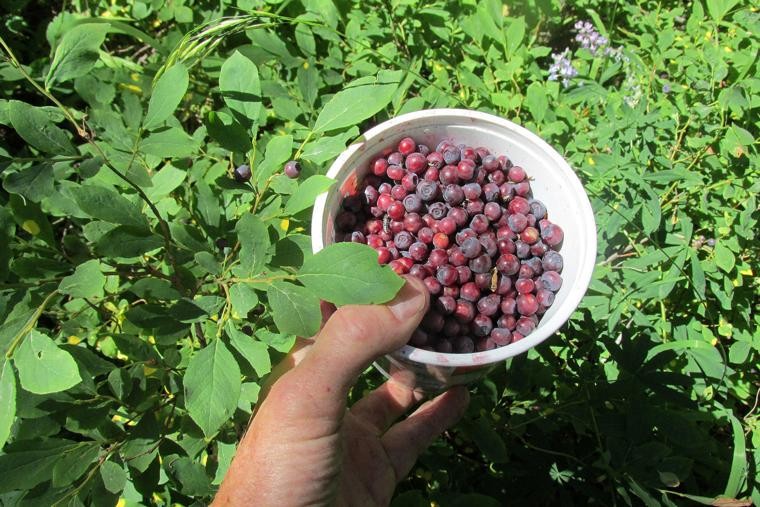As the joke goes, “I’d tell you where my favorite backcountry berry patch is, but then I’d have to kill you.”
It’s that time of year when lips, tongues and fingers get stained purple with huckleberry juice.
Huckleberry season, roughly the last week of July and first weeks of August, is upon us and pickers are roaming the hillsides in the Big Hole Mountains and Teton Range in search of the tiny, sweet berries.
The Caribou-Targhee National Forest is reminding people that while picking berries is a fine activity, commercial picking — that is picking berries with the intent to sell — is prohibited.
“We want all individuals to experience unique activities on their public lands,” said Mel Bolling, Caribou-Targhee Forest Supervisor. “By limiting huckleberry picking to recreational use only, we are able to give more people those opportunities.”
There is no fee or permit needed for personal use, “which is defined as picking four gallons per family or individual a year,” the Forest Service said in a news release. “Commercial or paid permits are not authorized or available. This is to provide as many families and individuals the opportunity to gather and harvest huckleberries for their personal use.”
So where do those huckleberry shakes or ice cream cones come from?
A spokesman for the Victor Emporium in Victor, “Home of the World Famous Huckleberry Shakes,” said its berries are supplied by pickers in Idaho Falls and north Idaho. “They pick them in the mountainsides around Swan Valley and other places,” he said.
“We don’t want a commercial user coming in there and taking everything, for what is often seen as a traditional family activity or individual activity to harvest up the berries,” Bolling said.
The Forest Service also encourages pickers to harvest the berries by hand rather than using mechanical means or raking or cutting the bushes.
“Raking can inhibit the quantity and quality of berries the following year and wastes berries,” the Forest Service said in a news release. “The rakes often remove all the leaves and when the plant doesn’t have leaves to produce and store energy, it decreases the productivity of the plant the following year. Any methods that damage or destroy the bushes are illegal and may result in a fine for damaging natural resources.”
According to a University of Idaho botany department report, western huckleberries have not been domesticated, though Idaho’s official state fruit is the subject of much study and effort be raised commercially.
Local berry picking enthusiasts, though often coy about specific locations, say good areas to pick include the Kelly Canyon region and slopes and trails in the Teton Range. As the season continues, berries at higher elevations begin to ripen.
Local Forest Service ranger districts offer maps and information about huckleberry picking.



